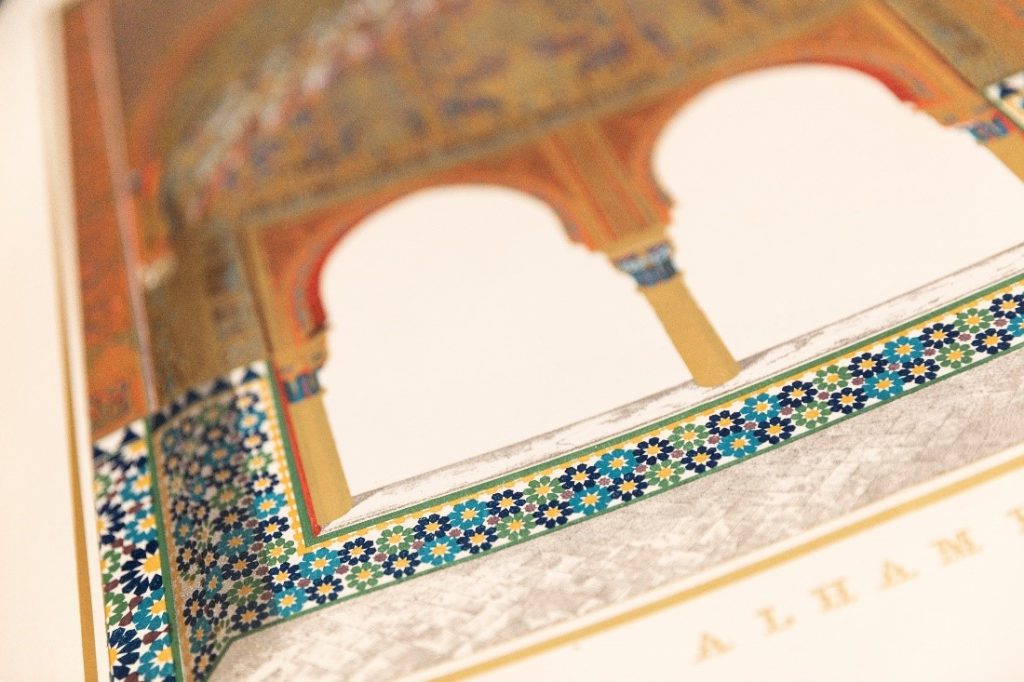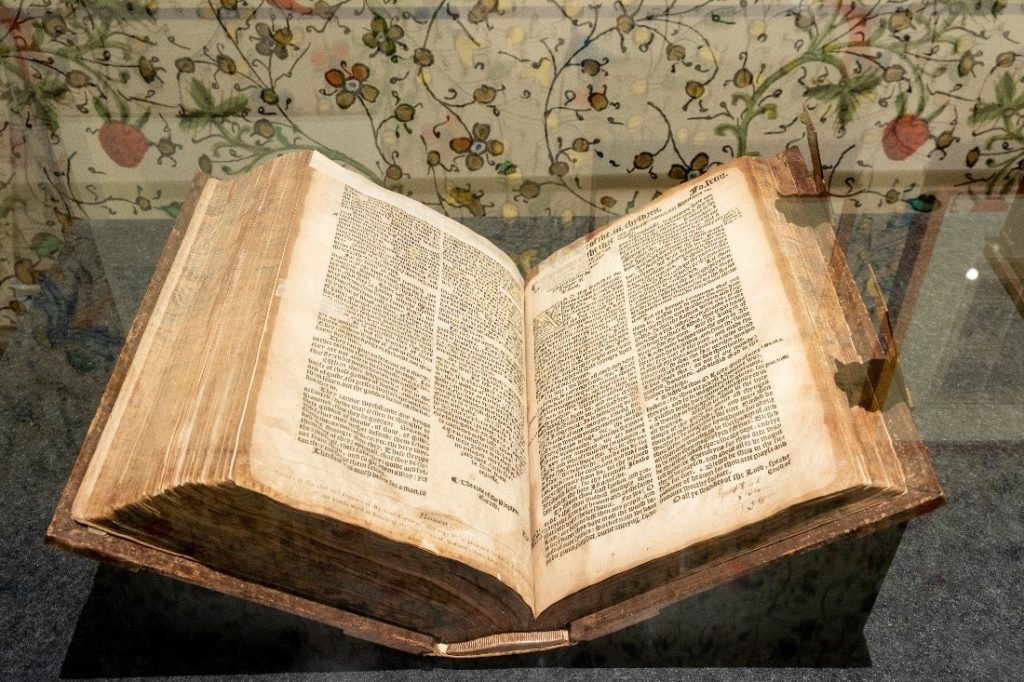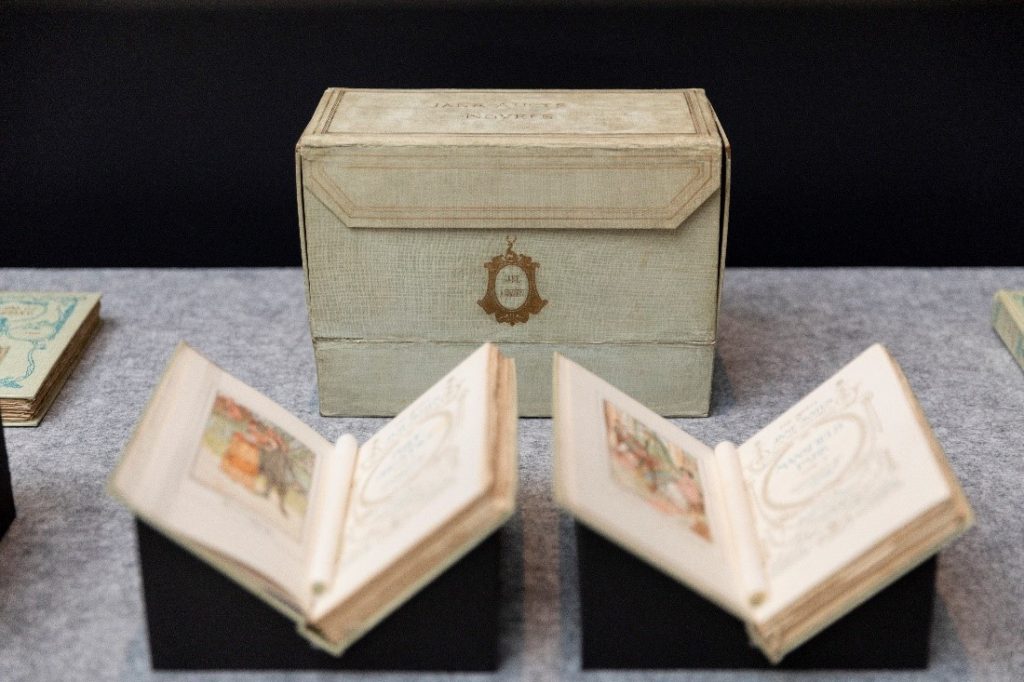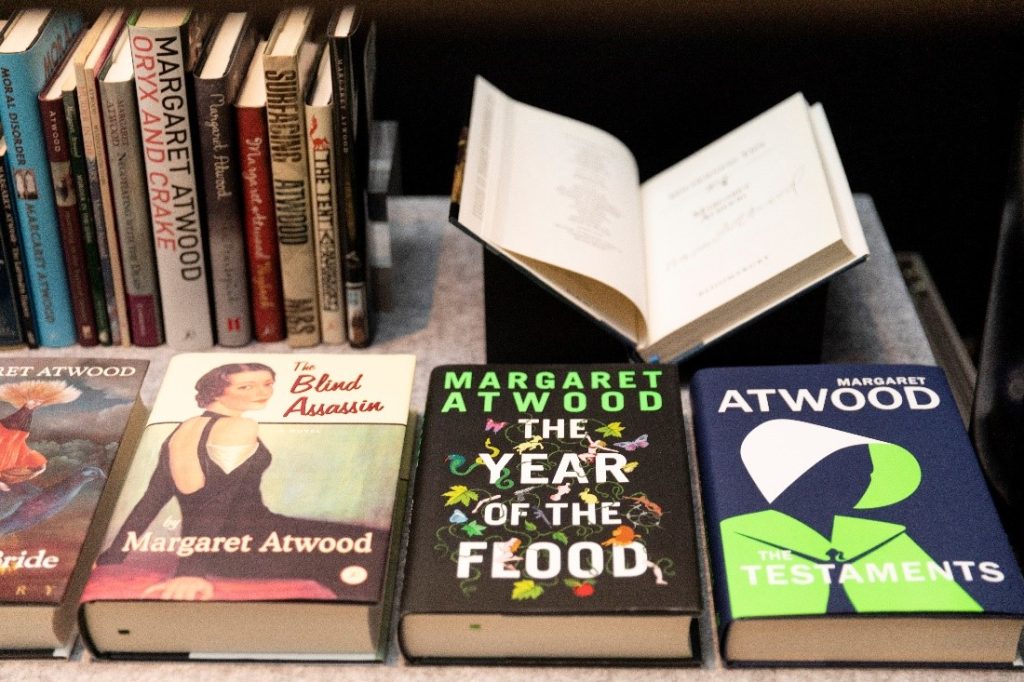A is for Alhambra
On display for the very first time is a magnificent work by English designer Owen Jones and French architect Jules Goury about one of the world’s most beautiful buildings, the Alhambra Palace in Granada, Spain. Its name means ‘Red Fort’ in Arabic. While the building dates as far back as the 9th century, it was largely renovated and rebuilt during the Nasrid Dynasty (1232–1492), the last Muslim rulers of Spain. After the Christian conquest of Spain in 1492, it became the Royal Court of King Fernando and Queen Isabella. Jones and Goury were the first to make a detailed study of this masterpiece of Islamic design. They spent some six months there, between 1834 and 1837, producing detailed drawings, tracings and casts, later published in two magnificent volumes, using the newly devised technique of chromolithography (colour lithographic printing). There is a lovely link between the Alhambra, one of the world’s most famously beautiful palaces, and our own library’s first reading room: the Pompeian designs from Owen Jones’ The Grammar of Ornament (also on display) were used in the original decorative schema of the Queen’s Hall, which was designed by Jones’ student, Edward La Trobe Bateman.

B is for Bibliography
For many of us, the word ‘bibliography’ conjures up memories of rushing to finish school or university assignments by compiling the required list of sources cited, frantically trying to put the information in the right format. However, in the world of rare books, it has a more specialized meaning: bibliography refers to both the organized listing of books, such as all known copies of a particular title (enumerative bibliography), and to the study of books as physical objects, examining the way in which they were made (descriptive bibliography). The word originated in the ancient Greek term ‘bibliographia’, meaning the writing of books. By the seventeenth century, which saw the birth in Europe of antiquarianism and archaeology as fields of study, it had come to mean the descriptive study of books, and it is in that sense that rare books specialists use it today.
C is for Codex
The codex is everywhere – it’s so omnipresent that we can sometimes forget how revolutionary this book format has been in the history of ideas and reading. The word comes to us from the Latin ‘caudex’, meaning ‘tree trunk’, and refers to the form from which the codex evolved: Roman writing tablets that were made of wood with a wax layer that could be inscribed, erased, and reinscribed. These tablets began to be stacked in bundles and stitched together down the long left edge, for convenience. In the first century CE, this form began to be made using parchment or vellum (treated animal skin), which made a very durable writing surface. When parchment leaves were stacked, stitched together and bound in wooden covers, the book as we know it was born. It allows a totally different way of engaging with written information – no longer was text confined to small clay tablets or lengthy, cumbersome papyrus or parchment scrolls. Instead, text could be easily accessed, annotated, edited, bookmarked, labelled and stored. Despite the plethora of digital forms of reading available to us today, the codex is still going strong over 2000 years later.

D is for Dictionaries
In this alphabet of World of the book 2022, we couldn’t go past mentioning a display all about the dictionary, the alphabetical guide to language that remains an indispensable reference tool in the online age. As well as a first edition of Samuel Johnson’s A Dictionary of the English Language (1755) - with its famous definition of his own profession, lexicographer, as “a harmless drudge” who “busies himself in tracing the original and detailing the signification of words” – the display celebrates the role that dictionaries have in connecting different people and helping them attempt to understand each other, literally and culturally. The posthumously published diary of Sydney Parkinson, the natural history artist who accompanied James Cook’s first South Pacific voyage (1768-71) includes a list of 150 words, with English meanings, from the Guugu Yimithirr language of Far North Queensland. This list comprises the first European publication of an Australian Indigenous language, and gives us a glimpse of communication efforts between the British and the Indigenous peoples of Australia in the years before the British invaded and settled the east coast.

E is for the John Emmerson Collection
In 2015, the library received one of the most significant and generous gifts in its 165-year history: the John Emmerson Collection. Born in Melbourne in 1938, John Emmerson has been described by book historian Nicolas Barker as ‘one of the great book collectors of our time’. He completed a PhD in nuclear physics at Oxford University in 1964, and it was there that he began to collect 17th-century English printed works, especially those relating to Charles I and the English Civil War. Returning to Melbourne in 1971, he studied law and became a leading intellectual-property lawyer. Over the next 40 years, Emmerson amassed 5000 rare titles, including early newspapers and political pamphlets; rare literary editions of Milton, Defoe, Dryden and others; and works relating to Charles I. Emmerson died in August 2014, leaving his collection to this library along with a significant financial bequest to facilitate ongoing acquisitions for his collection. Every year in World of the book, we celebrate this extraordinary gift with two focused displays. This year, you can explore the complex familial and political relationships of Tudor Queen Elizabeth I, her cousin Mary Queen of Scots, and Mary’s son James I of England and VI of Scotland, who united the thrones of Scotland and England for the first time. You can also explore translations of the great ancient Roman poets Ovid and Virgil, which brought their timeless Latin verse to English- and Italian-speakers during the Renaissance.

F is for Furniture
What’s your favourite piece of furniture? Perhaps a comfortable armchair, or a family heirloom table… In World of the book 2022, we celebrate a very different kind of furniture: the pieces of metal added to medieval and early modern book bindings to protect and embellish them. Book furniture comes in many forms: clasps (to hold springy vellum books closed), bosses (raised metal features that protect the book’s cover from wear and tear by taking the weight of the volume), centrepieces, cornerpieces and edge guards (which, like bosses, protect the book’s boards), and several others. The most elaborate form of furniture is cover plates, which encase the whole surface of the boards and can be embellished with engraved decoration and even jewels (known as ‘treasure bindings’). There are no precious jewels of the gemstone variety on display in World of the book 2022, but there are plenty of beautiful, treasured books with furniture to enjoy.

G is for Gold
As Shakespeare reminded us in The Merchant of Venice, “all that glisters is not gold”. But in World of the book 2022, there is plenty of real, glittering gold to behold! Gold is a key element in book decoration for many cultures. In sacred and religious texts such as the medieval and early modern Christian and Islamic books on display, the illumination (from ‘illuminate’, ‘to light up’, in Latin) that burnished gold leaf creates evokes divine light and the metaphorical light of understanding and wisdom, which banishes the darkness of ignorance. Real gold was also used extensively to embellish decorative tooled leather book bindings in many regions in the 15th to 18th centuries, a practice that originated in medieval Islamic bookbinding technique. You can also see lots of gilt edges in the exhibition, wherein the edges of the book block of a volume have had a layer of gold foil applied. This beautiful effect also has a practical purpose, as the gold finish protects the vulnerable edges of a book from dust, light and other threats.

H is for the David Hailperin Collection
The David Hailperin Collection is a fascinating collection-within-a-collection, and is the subject of a focused display in this year’s World of the book exhibition. Dr David Hailperin (1814–60) was born in Bucharest, Romania, and appears to have served as rabbi there for several years before living in Turkey, where he obtained his medical qualification. Moving to England in the 1840s, he worked as both a merchant and a clairvoyant who claimed magical powers, reflecting his lifelong fascination with esoteric mysticism. Hailperin immigrated to Australia in 1855 and practised as a physician in Melbourne and in Bendigo, where he died from pneumonia. He is buried in the Jewish section of Bendigo Cemetery. During the course of his eventful life and worldwide travels, he assembled a remarkable collection of around 160 volumes, which he brought to Melbourne in 1855. An eccentric figure, he divided opinion and struggled financially. Not long before his death, he deposited his books with a pawnbroker to secure a loan of £10. The Rev. Isaac Pulver purchased them, and in 1864 he sold the collection to this library. The library’s president, Redmond Barry, was clearly aware of the books’ importance, as he went to the step of including them in the 1865 catalogue in Hebrew, which would have involved specialist typesetting, an uncommon skill in colonial Melbourne. Comprising codes, responses and commentaries on Jewish religious law, and also works on Kabbalah and mysticism – the focus of the display this year – the David Hailperin Collection of manuscripts and early printed Jewish books is internationally recognised for its rarity and significance.

I is for Islamic texts
‘Read in the name of thy Lord …’ The first words of the Qur’an (a name which itself means ‘to read’ or ‘to recite’) symbolise the central role of the book in Islam. Muslims regard the Qur’an as the sacred word of God (Allah), dictated to the Prophet Muhammad by the Archangel Gabriel in the 7th century. This year in World of the book we have on display three beautiful examples of Islamic textual traditions. A 19th-century manuscript Qur’an from East or West Africa is displayed with its leather satchel, showing the shared Middle Eastern and African practice of storing books in satchels that could be carried over the shoulder or hung on pegs when not in use. Such satchels were used for both Islamic and Christian books in Africa.
Also on display is a gorgeous manuscript leaf from the 15th or 16th century, written in Arabic in Bihari script, indicating it originated in northern India. It is a variant of the Naskh (cursive) script, which was used in that region between the conquest of Timur (Tamerlane) and the establishment of the Mughal dynasty, during the 14th to 16th centuries. An interlinear Persian gloss (an explanatory commentary written in between the lines of the main text) is written in red ink. Circular segmented ayah (verse) markers are drawn in black, yellow, blue and red, and the name of Allah is written in red throughout.
Calligraphic art is very important in the sacred textual traditions of Islam; as a result, printed Qur’ans did not appear until the 18th century. On display is a lithographically printed prayerbook from the Michael Abbott Collection of South-east Asian Islamic books, which was recently catalogued by expert Dr Leila Alhagh – you can read a blog about her project here. The Dalā’il al-Khayrāt, composed in Morocco, is one of the most significant prayer books containing blessings upon and prayers to the prophet of Islam, Muḥammad. This copy was printed in Istanbul based on the manuscript calligraphed by Nūrī ‘Uthmān known as Qāyishzādah (1833–1894), a famous calligrapher of the Ottoman empire.

J is for Jane Austen
It is a truth universally acknowledged that a single reader in possession of a good imagination must be in want of a Jane Austen novel, and this year in World of the book, we’ve got you covered! On display is a recently acquired full set of Austen’s iconic novels, complete with a matching travelling case to take them on the road. The 1897 boxed set contains all Austen’s novels, which were first published in the last years of her life and immediately after her death, at the age of just 41: Sense & Sensibility (1811), Pride & Prejudice (1813), Mansfield Park (1814), Emma (1815) and Northanger Abbey and Persuasion (both 1817). Published in London by J.M. Dent, this set was the first edition to illustrate her novels in colour. Austen published her work anonymously, rather than suffer censure for undertaking an activity deemed inappropriate for women at that time; her name never appeared on her books during her lifetime. She is now one of the most highly esteemed English authors, her works continually republished and adapted into new media.

K is for the Ken Pound Collection
The Ken Pound Collection consists of over 25,000 items relating to Australian and New Zealand children’s literature, including rare and ephemeral materials (printed material that isn’t intended to survive, like advertising flyers). Ken Pound came to Australia when he was 14 years old. His passage was part of an assisted migration scheme that relocated children from British orphanages and institutions after World War II: He is one of many ‘child migrants’ recognised today as the ‘Forgotten Australians’. As an adult, Ken worked as a caretaker at the Brotherhood of St Laurence refuge for homeless men in Fitzroy, where he housed his growing collection of children’s books, which he began collecting in the 1970s. His collecting tastes are comprehensive: if an item was Australasian and intended for children’s reading, he would try to collect it. In 1994, the library acquired Ken’s collection, which greatly increased the significance of our holdings of Australian and New Zealand children’s books and has influenced institutions around the country, which did not previously collect ephemeral children’s items like advertising material.
This year in World of the book, you can see some beautiful publishers’ bindings from the Ken Pound Collection. ‘Publishers’ bindings’ is a term used to describe bindings designed and mass-produced for publishers from the 19th century, a time during which the publishing industry expanded enormously through technological innovations. These bindings are characterised by their bright and attractive cloth-covered, gilt-block casing, often featuring eye-catching pictorial and typographic designs. Cheap but attractive, they were a successful marketing tool, and remain a nostalgic favourite for many who grew up with them on the shelves.

Books from the Ken Pound Collection, State Library Victoria. Photograph: Teagan Glenane.
L is for Lyrebird
Have you ever been lucky enough to see a lyrebird in the wild? Famously shy, they are also famous for their beautiful tail plumage and their uncanny ability to mimic sounds. Indigenous names for them include buln-buln, weringerong and woorail. In the early 19th century, they attracted the attention of colonial European naturalists, who called them variously ‘mountain pheasants’ and ‘birds of paradise’. So why do we call them lyrebirds today? The first European images of these birds were drawn not from life but from specimens arranged by taxidermists in England, who inaccurately positioned their famous tail feathers. While sometimes shown curving inward in a ‘heart’ shape, the feathers were also sometimes shown curving outwards, resembling the ancient stringed instrument the lyre, giving rise to the name ‘lyrebird’. You can see examples of both types of images this year in World of the book, from the first English and French depictions of the bird in the early 19th century. But if you want to see what the lyrebird’s tail display really looks like, and you don’t have the patience to wait in the shady forests and bushlands of eastern coastal Australia, you might find one in your pocket: the 10-cent coin includes the most accurate representation of the lyrebird’s beautiful plumage.

M is for Margaret Atwood
Novelist, poet, essayist and activist Margaret Atwood (born 1939) is considered one of Canada’s greatest writers. She is also incredibly prolific, with 60 published titles, and this year in World of the book we have squeezed in as many beautiful first editions of her works as we could! These volumes are drawn from the Graham and Anita Anderson Collection, a highly significant collection of contemporary literary fiction that Graham and Anita regularly donate to the library.
Atwood’s first two poetry collections, Double Persephone (1961) and The Circle Game (1964), won awards, as have many of her later novels. She has twice won the Booker Prize, most recently in 2019 for The Testaments, the sequel to The Handmaid’s Tale (1985). Her earliest novels, such as Edible Woman (1969), Surfacing (1972) and Life Before Man (1979), explored the female experience, in particular issues around identity and the construction of gender. The Handmaid’s Tale (1985) extended these themes into speculative and dystopian territory, imagining the existence of a future America run by a totalitarian regime that has arisen in response to a fertility crisis. The novel was translated into a successful television series, and more recently, Atwood was involved in the creation of a unique fire-proof, indestructible copy of the novel, a commentary on the fact that it is one of the most banned books in the United States of America, a country that may soon overturn existing abortion rights law. If you’re a fan of Elizabeth Moss’ portrayal of June Osbourne (renamed Offred by her captor), come along to see the many other creations of this esteemed author.



That is a really interesting commentary on the exhibition, well-researched and well-written. I didn’t know about the Aboriginal word-list in Parkinson’s Diary.
Thanks Richard! It was great fun to write – the only trouble was stopping, which is why it’s being published in two parts 🙂
Just read “Happily ever after : celebrating Jane Austen’s Pride and Prejudice” by Susannah Fullerton and held by the State Library Victoria – finished it last night and this excellent blog turned up today and lo and behold – the new display of the travelling case version. So weird.